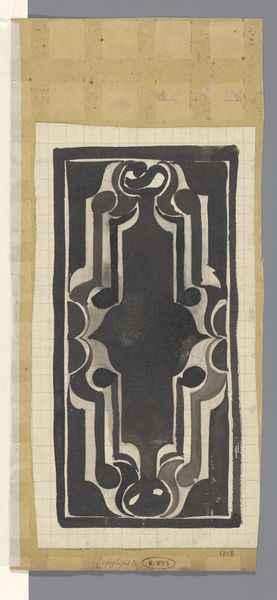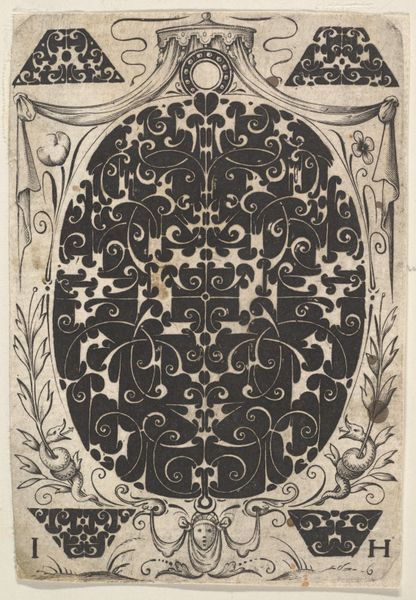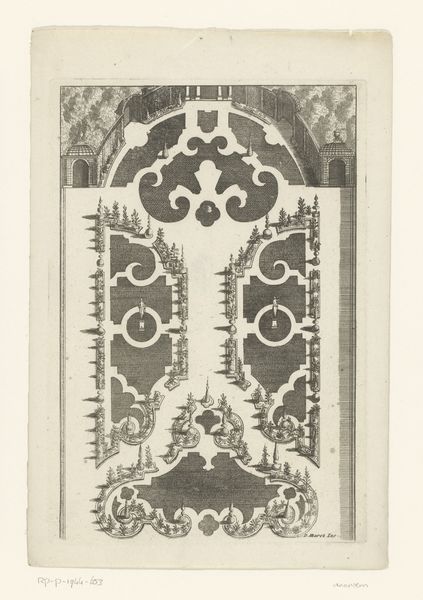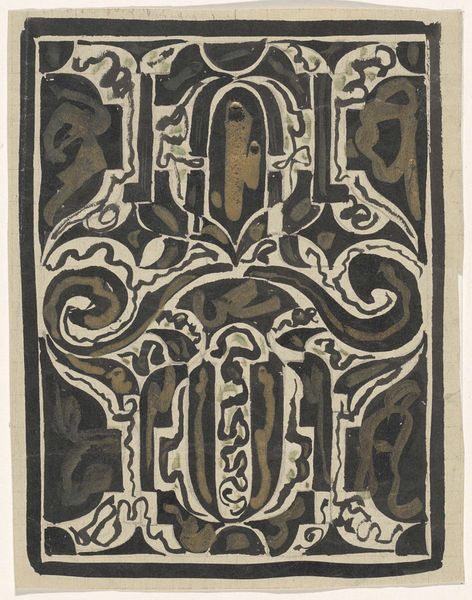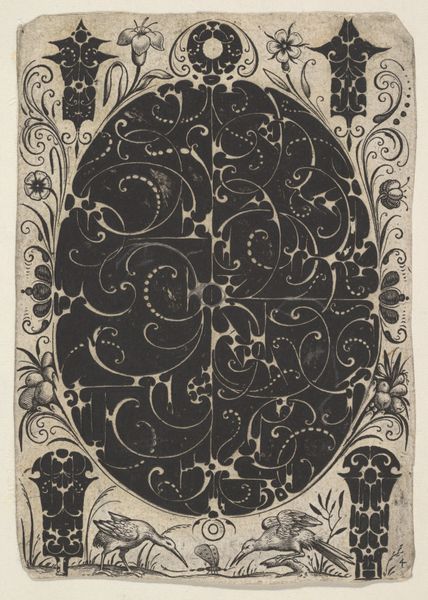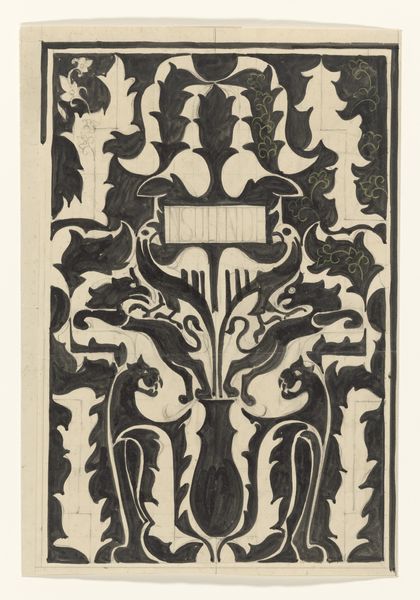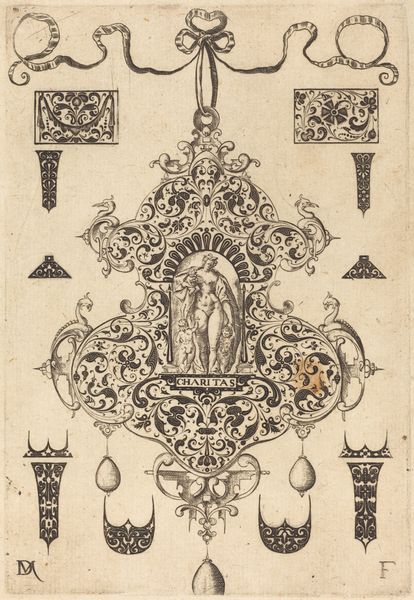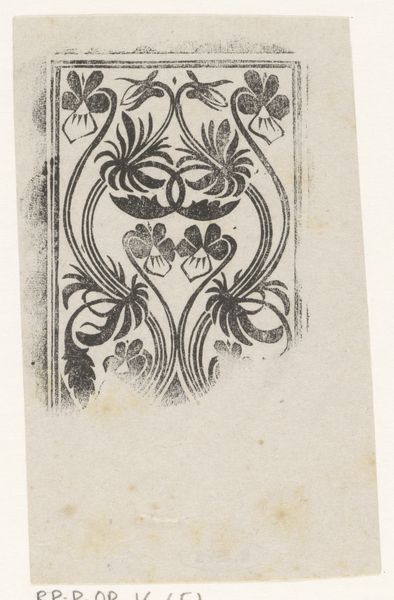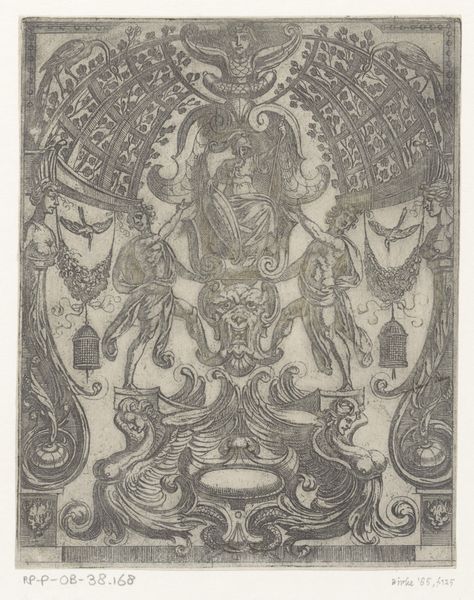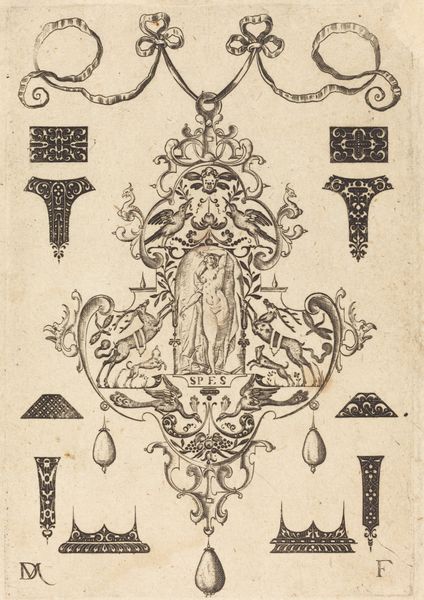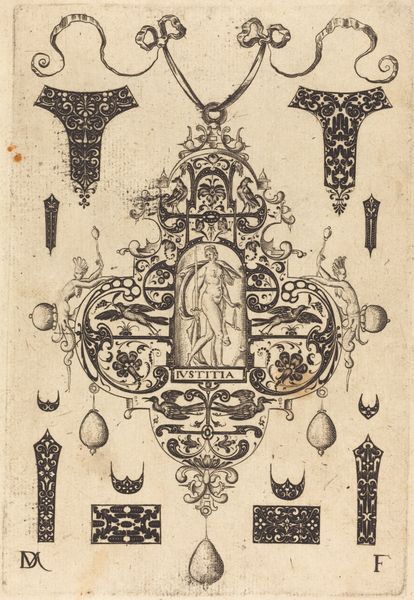
drawing, graphic-art, print, paper, ink
#
drawing
#
graphic-art
#
art-nouveau
# print
#
woodcut effect
#
paper
#
ink
#
linocut print
#
pen work
Dimensions: height 422 mm, width 325 mm
Copyright: Rijks Museum: Open Domain
Curator: This is Carel Adolph Lion Cachet’s "Ontwerp voor ex libris van de Vereeniging Hou en Trouw," dating from 1916. The medium appears to be ink on paper, categorized as drawing and graphic art within the Art Nouveau style. Editor: My first impression is of something rather somber and ornate. The dense black ink dominates, and it's full of figures and shapes, almost claustrophobic, yet deliberately crafted. Curator: It’s fascinating how this piece functions as a design for a bookplate – an ex libris – suggesting the means by which intellectual property was literally claimed in that era. Look closely at the suggested linocut print effect, indicative of its potential reproductive function and widespread circulation. Editor: Absolutely, and that’s what I find so rich here, seeing how certain visual motifs, almost emblems, like the birds perched at the top, communicate loyalty or steadfastness - if one interprets "Hou en Trouw" correctly as meaning "Hold and Faith". Curator: Precisely! The Art Nouveau elements point to the value placed on artisanal craft, challenging traditional methods, and also possibly the commodification of knowledge, as ex libris served not only for personal but for societal representation too. We're dealing with a complex web of aesthetics and labour. Editor: Consider too the central composition – it seems crowded with symbolic figures, hinting at the themes the Vereeniging might explore or champion. Are those stylized human forms intertwined in some sort of drama? It carries almost psychological depth, like figures surfacing from a dream. Curator: Indeed, Lion Cachet blends material function and symbolic resonance. The choice of printing method enables broader cultural consumption, and the Art Nouveau flourishes reflect an embrace of modern industrial possibilities combined with older techniques. Editor: Ultimately, this design offers insight into a specific cultural moment—early 20th century Netherlands where symbolism and production met. The Vereeniging likely wished to project a sophisticated but steadfast image. Curator: It invites us to consider the networks through which art and literature circulated. Thank you, that provides a fascinating frame through which to see Cachet's approach and craftsmanship. Editor: An enriching process to tease out the various layers of meaning embedded there! Thanks!
Comments
No comments
Be the first to comment and join the conversation on the ultimate creative platform.

